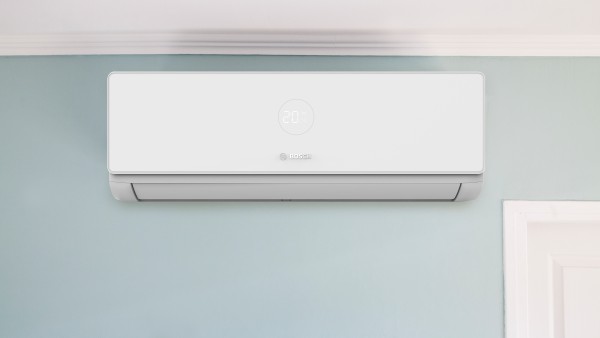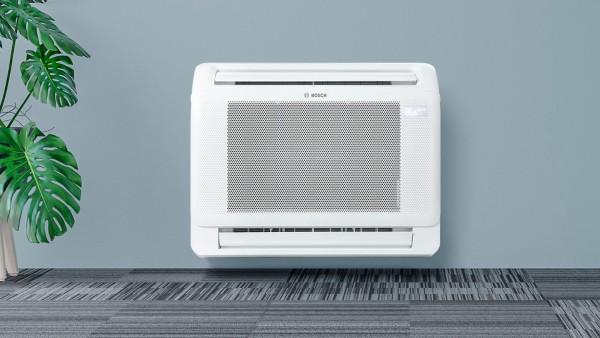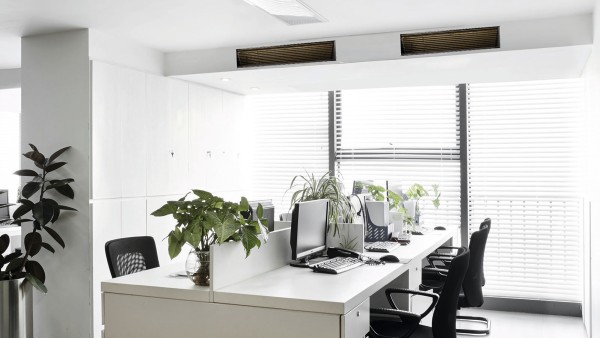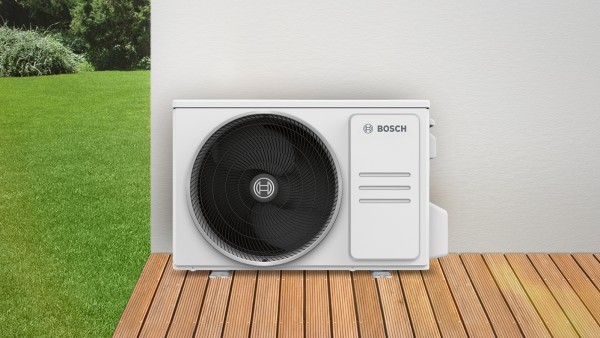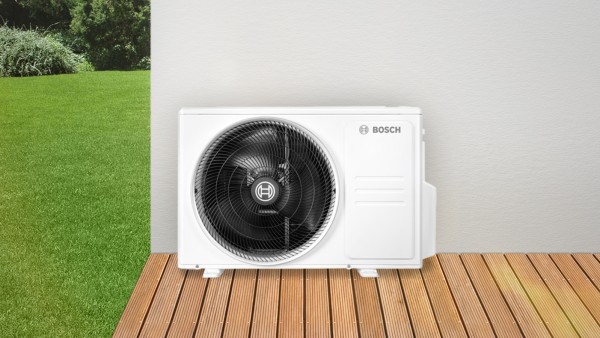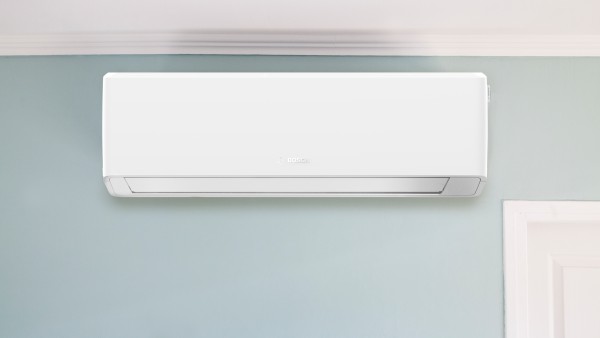
Jak funguje klimatizace?
Klimatizace se stává stále častějším doplňkem interiérů. Důvod je jednoduchý: během horkých letních měsíců může výrazně zlepšit kvalitu života. Ale jak funguje klimatizace? Na jakém principu? V tomto článku vám vysvětlíme:
- základní funkční principy klimatizačního systému
- vlastnosti různých typů klimatizace
- integraci klimatizačního systému do konceptu chytré domácnosti
- funkci odvlhčování
- topení pomocí klimatizace
Pro rychlé čtenáře:
- Základní princip klimatizacespočívá v přenosu tepla z vnitřních prostor budovy ven. Mnoho zařízení také filtruje a odvlhčuje vzduch v místnosti. Klimatizační systém využívá soustavu složenou z následujích komponentů: kompresor, kondenzátor, expanzní ventil, výparník, chladivo a ventilátor.
- Klimatizační systémy se zásadně liší ve své výbavě, výkonu, způsobu instalace, konstrukci a v typu použitého chladiva. Podrobněji vysvětlíme následující systémy: split klimatizace, centrální klimatizace a mobilní klimatizace
- Klimatizace s funkcí chytré domácnosti zvyšují komfort obsluhy, energetickou účinnost a uživatelskou přívětivost – například díky ovládání přes WiFi, senzorům a automatizaci.
- Kromě příjemné teploty klimatizace také odvlhčují vzduch, čímž mimo jiné zabraňují vzniku plísní.
- Klimatizace a topení: Obrácením chladivého okruhu pomocí čtyřcestného ventilu lze klimatizace využít také k vytápění obytných prostor.
- Propojení klimatizačního systému s fotovoltaickým systémem může výrazně snížit spotřebu energie. Velmi horké dny obvykle poskytují dobré podmínky pro výrobu elektřiny pomocí solárních panelů.
Klimatizace: Jak to funguje?
Zjednodušeně řečeno, klimatizační jednotky ochlazují obytné prostory tím, že pomocí elektrické energie a fyzikálních principů přenášejí teplo z místnosti ven z budovy. Mnoho zařízení také filtruje a odvlhčuje vzduch v místnosti. Pro celý proces využívají chladivový okruh, který zahrnuje: kompresor, kondenzátor, expanzní ventil a výparník. Pomocí ventilátoru rozvádějí ochlazený vzduch do místnosti. V podstatě jde o to, absorbovat tepelnou energii přítomnou v místnosti a následně ji odvést ven, aby se snížila teplota uvnitř.

Jednotlivé komponenty a jejich funkce
- Kompresor
Stlačuje chladivo, čímž dochází ke zvýšení jeho tlaku a teploty. Díky tomu může chladivo efektivněji přenášet teplo z vnitřního prostředí do venkovního.
- Kondenzátor
Úlohou kondenzátoru je ochladit a zkapalnit chladivo ohřáté kompresorem. Přenáší teplo absorbované z vnitřního prostředí do venkovního vzduchu, čímž dochází ke kondenzaci chladiva.
- Expanzní ventil
Reguluje tok kapalného chladiva a snižuje jeho tlak. Toto snížení tlaku způsobí, že se chladivo ochladí a ve výparníku vypařuje při nižším tlaku, což je klíčové pro proces chlazení ve vnitřním prostoru.
- Výparník
Je zodpovědný za udržování příjemné teploty v klimatizačním systému. K tomu propouští kapalné, dekomprimované chladivo skrz svůj výměník tepla. Jakmile (stále) teplý vzduch z místnosti proudí přes chladicí lamely výparníku, chladivo absorbuje teplo a vypařuje se, čímž ochlazuje vzduch, který se následně vrací zpět do místnosti.
- Chladivo
Látka, známá také jako chladivo, hraje klíčovou roli v procesu chlazení. Absorbuje teplo z vnitřního prostředí a přenáší ho ven z budovy. Chladivo cirkuluje v uzavřeném systému a neustále mění svůj stav mezi plynným a kapalným. Díky tomu dokáže velmi efektivně přenášet teplo.
- Ventilátor
Je zásadní pro cirkulaci vzduchu. Teplý vzduch z místnosti je nasáván a veden do výparníku, kde je ochlazen. Ventilátor pak rozvádí nyní ochlazený vzduch po celé místnosti, což znatelně snižuje teplotu a ideálně vytváří příjemné klima v prostoru.
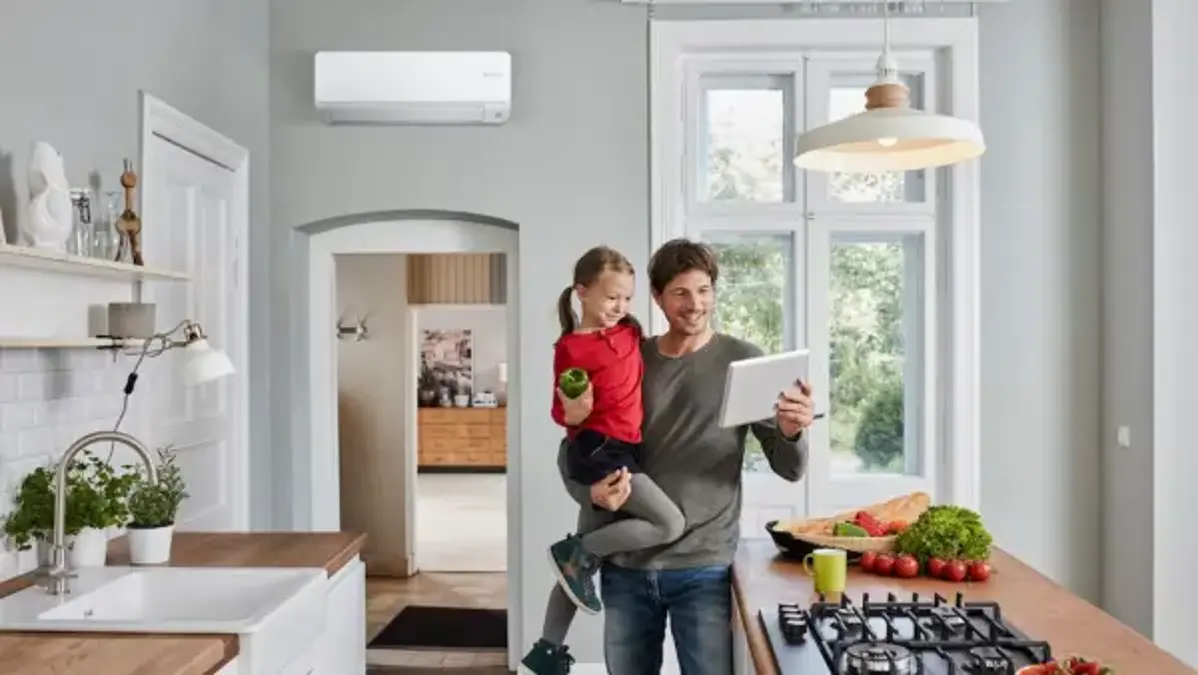
Funkční vlastnosti různých typů klimatizačních systémů
Ačkoli základní princip klimatizace je u všech typů zařízení v podstatě stejný, stále existují rozdíly v mobilitě zařízení, typu instalace a struktuře jednotlivých komponent chladicí technologie.
Splitové systémy
Klimatizační systémy s venkovní jednotkou, označované také jako split klimatizace, fungují díky propojení vnitřní a venkovní jednotky pomocí chladivových trubek. Vnitřní jednotka (v případě single split systému) ochlazuje vzduch v místnosti a odvádí absorbované teplo ven. Venkovní jednotka následně přebírá funkci uvolnění tohoto tepla zpět do venkovního prostředí. Kompresor ve venkovní jednotce cirkuluje chladivo, což umožňuje přenos tepla mezi vnitřním a venkovním prostorem a zajišťuje tak efektivní chlazení. V závislosti na objemu vzduchu, který je třeba ochladit, nebo na počtu místností, které je třeba klimatizovat, se pro tento proces používá buď jedna vnitřní jednotka, nebo více vnitřních jednotek (klimatizace multisplit).
Centrální klimatizační systém
Klimatizace s výfukovou hadicí
Jak funguje klimatizace v rámci chytré domácnosti?
Bosch je absolutním průkopníkem v oblasti chytrých domácností a udržitelnosti. Proto by neměly být opomíjeny chytré funkční aspekty moderních klimatizačních jednotek – zvyšují provozní komfort, energetickou účinnost a uživatelský komfort.
Klimatizace s WiFi: Mnoho nových modelů klimatizací lze připojit k domácí WiFi síti a ovládat je pomocí aplikace z chytrého telefonu, když jste na cestách.
Díky integraci do systému chytré domácnosti lze vzhledem k neustále rostoucím cenám elektřiny ušetřit spoustu peněz – klimatizační systémy těží z propojení se senzory, které detekují například to, zda jsou v místnosti osoby nebo zda bylo otevřeno okno.
Automatizační pravidla nabízejí další možnosti. Stačí přizpůsobit ovládání klimatizace svému dennímu režimu ve všední dny nebo o víkendech a systém například ochladí místnosti ještě předtím, než se vrátíte z práce domů.
Jak funguje klimatizace s odvlhčováním vzduchu?
Klimatizace nezajišťují pouze příjemnou teplotu v místnosti, ale také mění její klima tím, že odvádějí vlhkost. K tomu dochází během procesu chlazení: ventilace nasměruje teplý, vlhký vzduch z místnosti přes tzv. chladicí lamely, ve kterých cirkuluje chladivo. Ochlazení způsobí, že vzduch je méně schopný udržet vlhkost, což vede ke kondenzaci vodních částic obsažených ve vzduchu. Kondenzát je zachycen v zařízení a odváděn pryč. Vysušený vzduch je následně vypouštěn zpět do místnosti. Moderní klimatizační systémy s odpovídající funkcionalitou měří vlhkost a lze je ovládat tak, aby vyhovovaly individuálním potřebám obyvatel. Odvlhčování může nejen zlepšit vnímaný komfort vnitřního klimatu, ale také pomoci předcházet vzniku plísní.
Klimatizace Bosch zajišťují vysokou kvalitu vzduchu v místnosti díky tzv. technologii Plasmacluster. Všechny systémy vybavené touto funkcí jsou iznačeny pomocí zelené ikony:
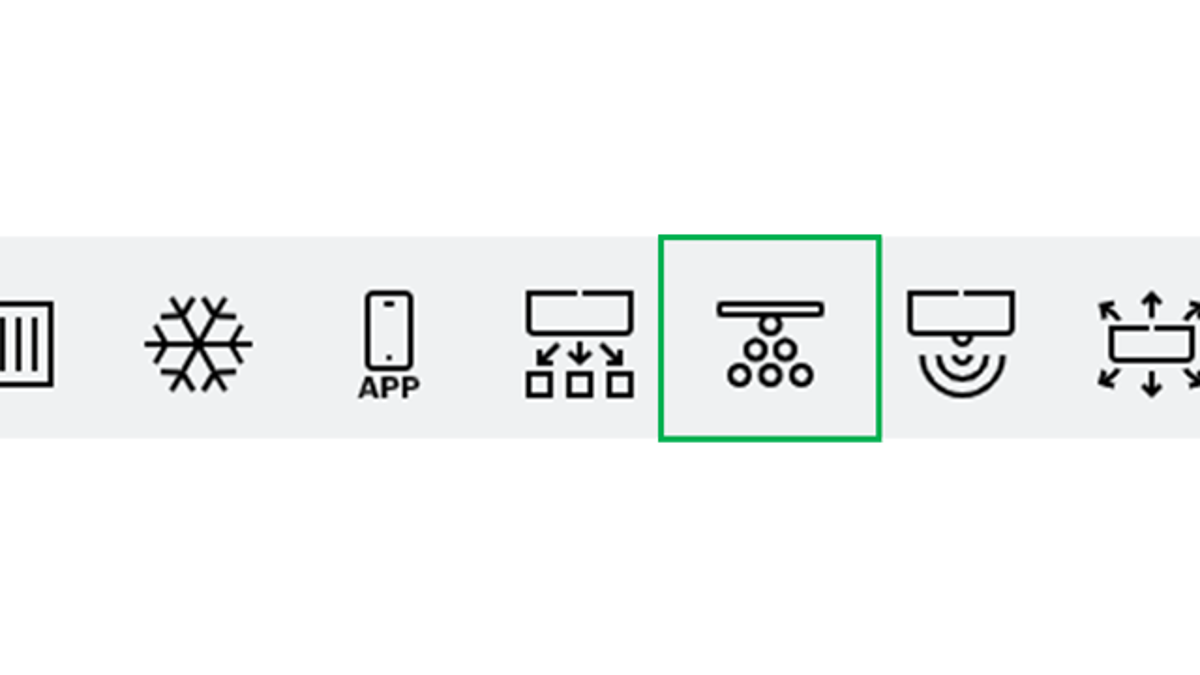
Jak funguje klimatizace jako topení?
Pokud má klimatizační systém funkci vytápění, umožňuje zařízení obrátit směr chladivového okruhu. Ve standardní konfiguraci klimatizace odvádí teplo z vnitřního prostředí ven. Když je aktivována funkce vytápění pomocí čtyřcestného přepínacího ventilu, tento proces se obrátí. Klimatizační systém pak odebírá teplo z venkovního vzduchu – i při nízkých venkovních teplotách – a přivádí ho dovnitř. Venkovní jednotka klimatizace nyní funguje jako výparník, který absorbuje teplo z venkovního vzduchu, a vnitřní jednotka působí jako kondenzátor, který ohřívá vnitřní prostor budovy.
Mimochodem: v našich přehledech produktů snadno na první pohled najdete klimatizační jednotky s integrovanou funkcí vytápění pomocí ikony označené zeleně níže:
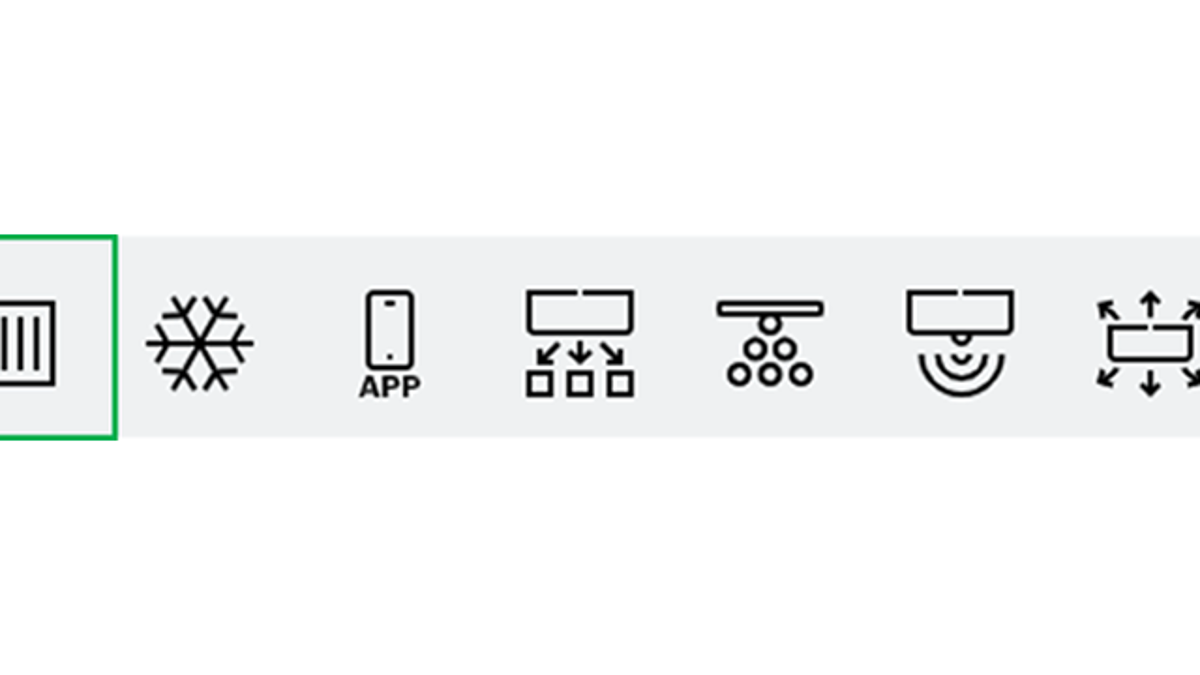
Dobré vědět
Klimatizační jednotky s invertorovou technologií pracují „chytře“ a rovnoměrněji než klimatizační jednotky bez vestavěného invertoru. Neustále přizpůsobují výstupní výkon tak, aby vyhovoval požadavkům: krátce před dosažením nastavené teploty klimatizace sníží otáčky kompresoru. To znamená, že maximální výkon zařízení není využíván trvale, ale pouze v případě, že je to skutečně nutné. Tímto způsobem ušetříte náklady na elektřinu a vaše místnosti budou mít přesně takovou teplotu, jakou si přejete – ani příliš chladnou, ani příliš teplou.
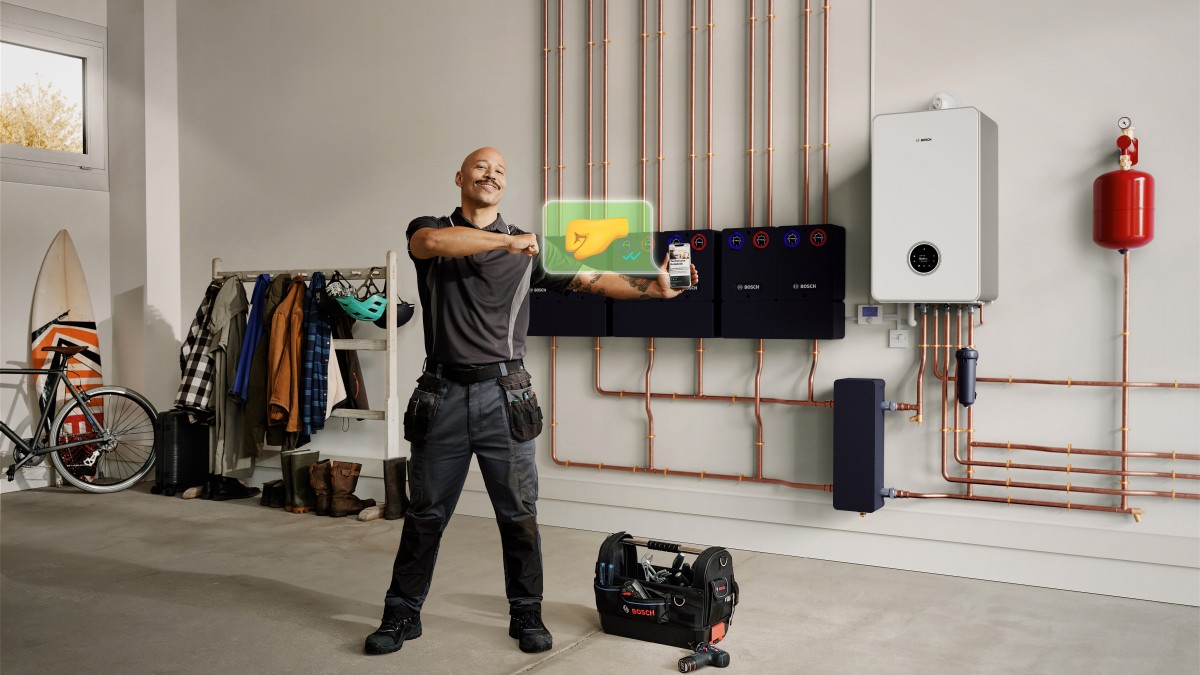
Naši odborní a certifikovaní servisní partneři pro klimatizace Bosch vám rádi pomohou najít nejlepší chladicí systém pro váš domov či kancelář.
Vyzkoušejte vizualizaci klimatizace u vás doma ve 3D
Vyberte si vnitřní jednotku:
Vyberte si venkovní jednotku:
Vyzkoušejte vizualizaci klimatizace u vás doma ve 3D
Vyberte si vnitřní jednotku:
Vyberte si venkovní jednotku:
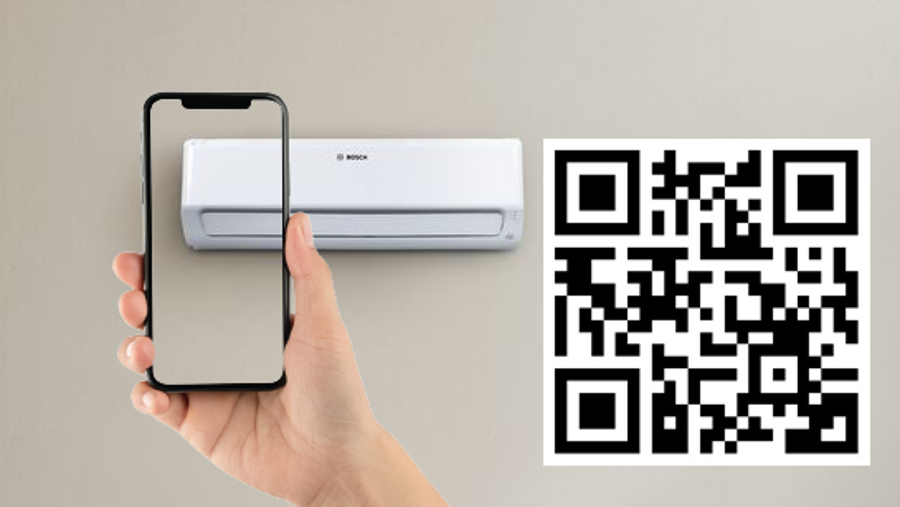
Vyzkoušejte si vizualizaci klimatizace ve 3D!
Stačí naskenovat QR kód pomocí chytrého telefonu a ponořit se do světa rozšířené reality se 3D výrobky.

